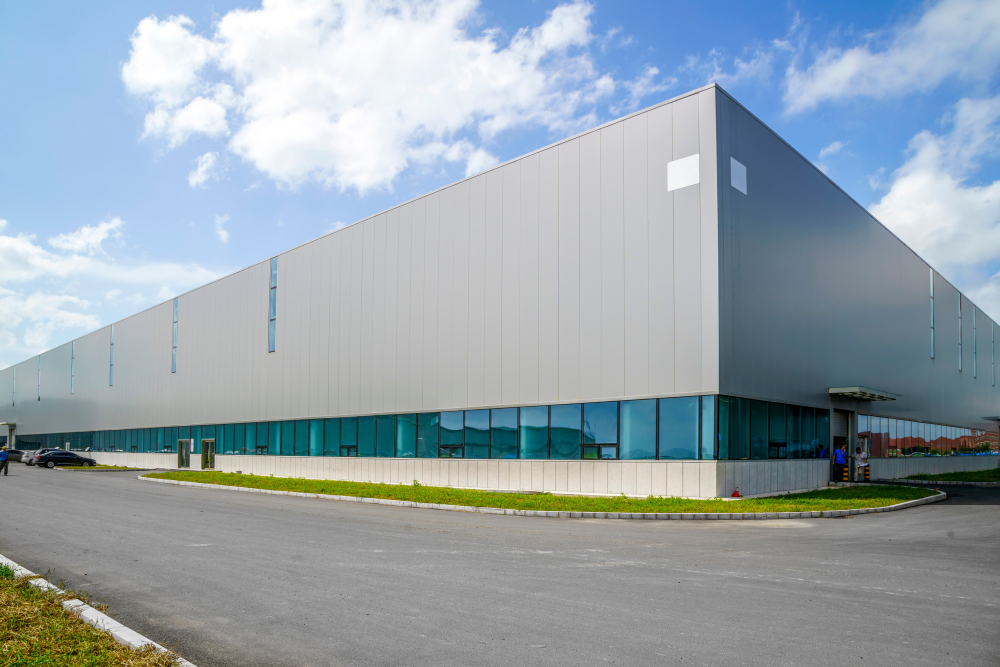Industrial building design in Palo Alto presents a unique blend of challenges and opportunities. In a region known for technological innovation and environmental consciousness, designing industrial spaces that meet both functional needs and sustainability standards is essential. Whether you’re planning a manufacturing plant, a high-tech facility, or a distribution center, understanding local requirements and current design trends can help you create a structure that’s both practical and forward-thinking.
Let’s dive into the crucial aspects of industrial building design in Palo Alto, from functional layouts and sustainable materials to zoning laws and community impact.
Understanding the Palo Alto Landscape for Industrial Design
Palo Alto’s industrial scene is influenced by Silicon Valley’s tech-driven culture, where businesses prioritize efficiency, innovation, and sustainability. The city’s zoning regulations, environmental standards, and architectural expectations make industrial building design a more complex process than in many other areas. Industrial structures must serve high-tech, manufacturing, or logistics purposes while adhering to Palo Alto’s commitment to energy efficiency and low environmental impact.
Palo Alto is also a city with a distinct aesthetic, where even industrial buildings are expected to blend seamlessly into the community. From architectural style to landscaping and public-facing elements, design choices should reflect the city’s character and values.
Key Elements of Industrial Building Design in Palo Alto
- Efficient Space PlanningIndustrial buildings are all about functionality, and space planning is critical. Unlike traditional office spaces, industrial facilities need layouts that support high-capacity storage, streamlined workflows, and easy accessibility.
- Open Floor Plans: Open spaces allow for flexible workflows, which is ideal for facilities that need to adapt quickly to changing demands.
- Segmentation: Dividing the building into zones—production, storage, office space, etc.—improves efficiency and safety.
- High Ceilings and Wide Aisles: These features are essential for accommodating machinery, conveyor belts, or storage racks and ensuring safe and easy movement within the building.
- Sustainable Building MaterialsPalo Alto has strong environmental goals, and sustainable design is not only encouraged but often expected in new constructions. By incorporating eco-friendly materials and energy-efficient systems, industrial buildings can reduce their carbon footprint and operating costs.
- Recycled and Renewable Materials: Using materials like recycled steel, reclaimed wood, and low-VOC paints helps create a greener building.
- Insulation and Roofing: High-quality insulation materials and reflective roofing reduce heating and cooling needs, saving energy over time.
- Energy-Efficient Lighting: LED lighting and natural light solutions, such as skylights and clerestory windows, minimize energy consumption and improve the workspace ambiance.
- Energy and Resource EfficiencyIndustrial buildings in Palo Alto are expected to minimize energy and resource consumption. Incorporating energy-efficient systems and sustainable practices is a significant part of industrial building design.
- Solar Power Integration: Many industrial buildings are outfitted with rooftop solar panels to offset electricity usage.
- Water Recycling Systems: For industries requiring significant water usage, systems that recycle or treat wastewater can reduce resource strain.
- Smart HVAC Systems: Advanced HVAC systems that monitor and adjust temperature, humidity, and airflow ensure energy savings without sacrificing comfort.
- Advanced Technology IntegrationAs a tech hub, Palo Alto’s industrial facilities often integrate cutting-edge technology to streamline operations. Many industrial buildings are designed to support automation, smart systems, and IoT (Internet of Things) devices.
- Automation Readiness: From robotic assembly lines to automated storage systems, buildings should be designed to support future upgrades and technological advancements.
- IoT Sensors: Smart sensors that monitor equipment performance, track inventory, and manage energy use create a more efficient and responsive workspace.
- Data Connectivity: High-speed internet and robust networking infrastructure are essential for modern industrial buildings, especially those serving Silicon Valley’s tech sector.
- Zoning and Compliance with Local CodesPalo Alto has specific zoning regulations and building codes that impact industrial design. Understanding and adhering to these regulations ensures that projects meet local requirements and avoid costly delays or modifications.
- Zoning Requirements: Check the city’s zoning laws to confirm if the intended industrial use is permissible in a given area.
- Environmental Impact: Palo Alto has strict environmental policies to protect local ecosystems. Industrial buildings must account for waste disposal, emissions control, and landscaping to minimize their ecological impact.
- Building Height and Setback Requirements: There may be restrictions on building height, lot coverage, and setback distances that can influence the building’s footprint and overall design.
Challenges of Industrial Building Design in Palo Alto
Designing an industrial building in Palo Alto comes with its own set of challenges. The high cost of land, strict zoning regulations, and sustainability requirements can make the process complex. Moreover, ensuring compliance with local building codes while integrating the latest technology can add to project costs and planning time. Working with a contractor familiar with Palo Alto’s regulations can streamline the process and help address these challenges effectively.
Final Thoughts
Industrial building design in Palo Alto requires a careful balance of functionality, sustainability, and compliance. By incorporating efficient layouts, sustainable materials, and advanced technology, you can create a building that not only serves your operational needs but also aligns with Palo Alto’s forward-thinking values.
Whether you’re looking to build a high-tech manufacturing facility or a flexible warehouse, working with experienced professionals who understand local requirements can make all the difference. With the right approach, your industrial building can be a model of innovation, efficiency, and sustainability in Palo Alto’s evolving industrial landscape.






